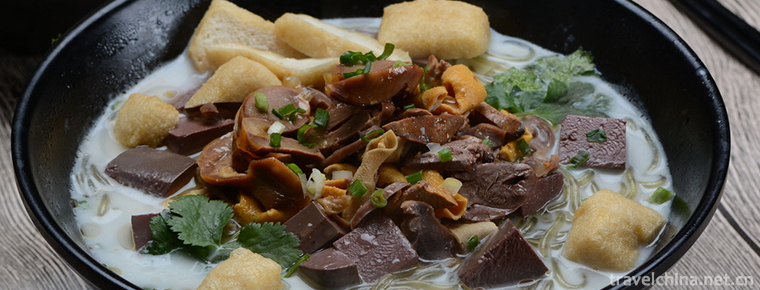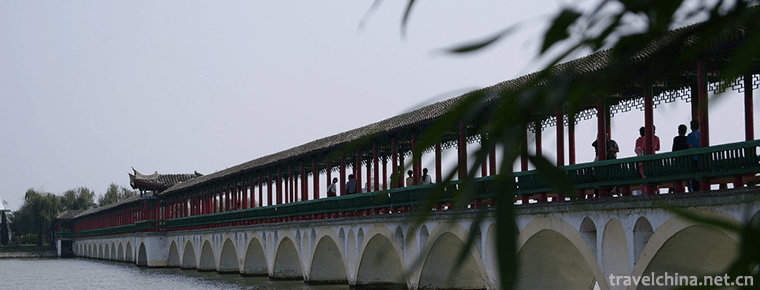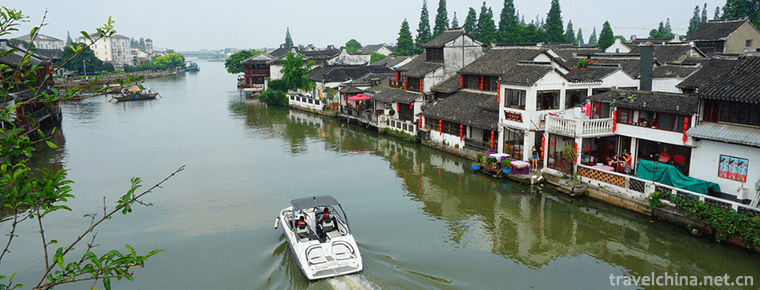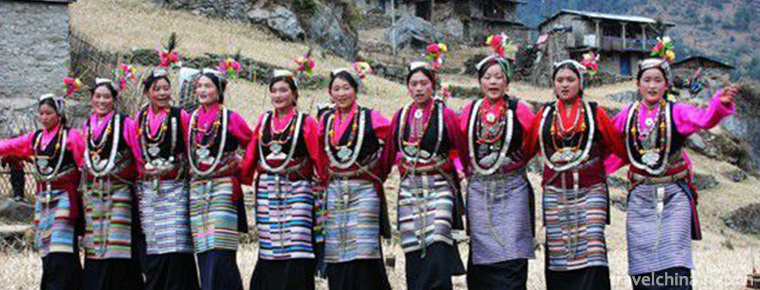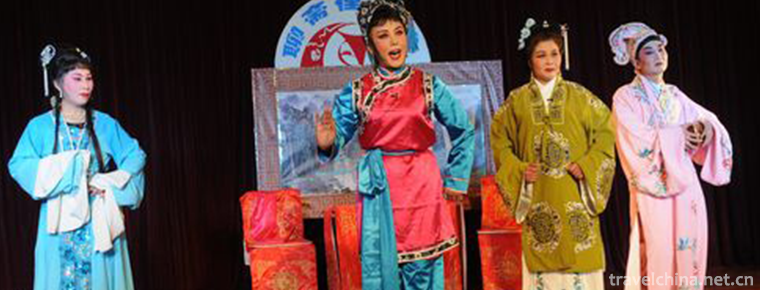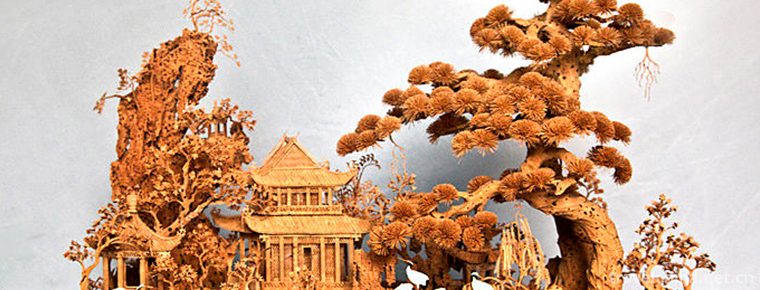Sintering Techniques of Cizhou Kiln
Sintering Techniques of Cizhou Kiln
Cizhou kiln firing technology, the local traditional firing technology of Fengfeng mining area in Hebei Province, is one of the national intangible cultural heritage.
Cizhou kiln firing process is complex, raw materials, collection, sorting, processing, etc., summed up 72 processes, and each process has a more detailed division.
On May 20, 2006, the firing technology of Cizhou kiln was approved by the State Council and listed in the first batch of national intangible cultural heritage list.
historical origin
Cizhou kiln has a long history of development, in the course of thousands of years of development, created numerous brilliant. The ancestors in Cizhou area started firing pottery as early as 7500 years ago. During the period of Jin, Southern and Northern Dynasties, the pottery technology of Pengcheng and Linshui became mature. Celadon and cosmetic white pottery had been fired, and the leap from pottery to porcelain had been completed.
In Song Dynasty, the development of Cizhou kiln was very prosperous. In the long-term practice of ceramics and porcelain, the unique style and characteristics gradually formed, which formed the style and physiognomy of Cizhou kiln products, and combined the ceramics skills and art, raised the ceramics to a brand-new artistic realm, and opened a new era of ceramics art. Cizhou kiln not only firs white, ink, yellow, green and tricolor porcelain, but also firs under-glaze paintings on the basis of white porcelain. It also has rich decorative techniques and has become the representative works of Cizhou kiln.
The decorative style of Cizhou kiln in Jin Dynasty tended to simplify. In the Yuan Dynasty, the Cizhou kiln in Pengcheng area set off another upsurge of porcelain making. Besides inheriting the traditional varieties of Song and Jin Dynasties, the production scale also expanded greatly, and the production of large-scale utensils also increased.
During the Ming Dynasty, Cizhou kiln still maintained a considerable output. Official kilns were set up in Pengcheng and warehouses were set up in Nanguan, Cizhou. As the center of Cizhou kiln, Pengcheng became the northern ceramics capital.
In the early Qing Dynasty, the Cizhou kiln in Pengcheng entered a relatively prosperous period, with more kilns, larger kiln types, more varieties and more production. Daily porcelain covered the folk market. However, in the late Qing Dynasty, the production of Cizhou kiln declined, the variety of products declined sharply, the traditional artistic style declined gradually, and the number of porcelain kiln and porcelain-making workers also decreased greatly.
Process characteristics
technique
The decorative arts of Cizhou kiln are mainly divided into three series: cosmetic white porcelain, black glazed porcelain and low temperature color glazed porcelain. The decorative techniques include cosmetic white porcelain, white glazed engraving flower, pearl ground engraving flower, black glaze engraving flower, Song tri-color, red-green color, white ground black flower, brown color in Qing Dynasty, blue flower in Republic of China and modern Cizhou kiln pattern.
The chinaware fired by Cizhou kiln is mainly used for daily conversational articles of the people. Its decoration is mainly characterized by black-and-white contrast. It is decorated with iron embroidery, portrayal, red-green color, yellowish-brown, green, blue and black glaze, which constitute the characteristics of the decorative art of Cizhou kiln ceramics.
Draw materials
The decorative art of Cizhou kiln breaks the past rules in the aspect of material selection. It seldom uses the abstract and regular geometric pattern, but freely develops according to folk customs and needs. They are mostly based on realistic stories of characters, folklore, twigs and leaves, smooth curly lines and flexible jumping insects, fish, birds and animals, etc. Its pattern modelling carries on the artistic processing according to the object's character and the manner, concise exaggeration, lively and vivid. This makes the decoration of Cizhou Kiln Ceramics more national style and traditional artistic characteristics, so as to win the favor of the masses.
Another characteristic of Cizhou kiln is that it decorates objects with various chronologies, inscriptions, surnames and inscriptions. The writing method of Cizhou kiln has no definite specifications and is very arbitrary. Among all kinds of inscriptions, epigrams, auspicious sayings and proverbs are common. Most of the inscriptions are written on various porcelain pillows. They use folk vernacular language completely, which not only increases the flavor of folk culture, but also has the auspicious meaning. Therefore, they are loved by the common people.
Composition
Cizhou kiln's product composition is very rigorous, elegant without losing simplicity, vivid image, very interesting, is an important part of traditional Chinese national culture.
Technological process
Cizhou kiln process is complex, raw materials, collection, sorting, processing, etc., summed up 72 processes, and each process has a more detailed division.
Some of the processes are as follows: 1. raw material processing; 2. slurry refining; 3. moulding; 4. drying; 5. dressing; 6. glazing; 7. decoration; 8. firing; 9. finished products. In the process of firing to finished products, it must go through four steps: loading kiln, firing, cooling and unloading kiln; among them, the bowl kiln must be firing for 3 days and nights, cooling for more than 10 days; the cylinder, bottle and other utensils must be firing for 5 days and nights, cooling for more than 10 days.
Inheritance and protection
Inheritance value
With the traditional firing techniques of Cizhou kiln as the core, the ceramic industry culture including folk culture, oral literature, kiln building art and so on has been formed. At its peak, the temple fair in Pengcheng Ancient Town reached more than 20 times a year, which promoted ceramics trade activities, produced unique and rich trade customs, folk stories, production proverbs, and left behind a large number of utensils, words and paintings.
- Historical value
Cizhou kiln is a famous kiln area of white and decorative porcelain in the north. Its firing process is unique. Its monochrome glaze decoration and porcelain painting are the earliest, most perfect and most mature in the history of Chinese porcelain development. The old generation of firing technicians continued from making pottery to making porcelain from generation to generation. Technically speaking, Cizhou kiln was the earliest to use coal cave-shaped production, and also the earliest to use the original mechanical wheel, which was also used in 1956. It is similar to the ancient cobblestone support, pulling blanks with dial wheel method. Cizhou kiln now has more than 70 technological methods, and the firing technology of Cizhou kiln has important historical value.
- Artistic value
Cizhou kiln is famous for producing white glaze and black-color porcelain. The black-white contrast is strong and distinct. The design is very striking. It can be used for carving, scratching, picking and filling both. It also creatively draws Chinese painting techniques on the porcelain in the form of patterns, which is skillfully and vividly drawn. It has a fascinating artistic charm. It opened up a new way of Chinese porcelain painting decoration, but also laid the foundation for the great development of Jingdezhen blue and white and painted porcelain after the Song Dynasty.
Documents about Cizhou kiln pottery in Song Dynasty have not been seen in Song Dynasty, mainly appeared in Ming and Qing Dynasties. In the early Ming Dynasty, Cao Mingzhong's Gegu Yao Lun, Wang Zuo's Xin Zengge Gu Yao Lun, Xie Zhao's Wuzai figurines, Cizhou Chronicle, Ming Huidian, Zhu Yan's Tao Shuo, Lanpu's Jingdezhen Taolu and Xu Zhiheng's Yinliuzhai Shuo Porcelain all recorded Cizhou kiln pottery in different degrees in shape, glaze color, firing site and technological characteristics. Description.
There are many ancient porcelain kiln sites and porcelain works since Song Dynasty in Cizhou kiln. The exquisite decorative sculpture, freehand brushwork and abundant ceramic modeling in the works fully show that the firing technique of Cizhou kiln has high artistic value.
Influences
Cizhou kiln is the largest folk kiln system in the north of ancient China. It is also a famous folk porcelain kiln. The kiln site is located in Guantai Town and Pengcheng Town, Fengfeng Mining Area, Handan County, Hebei Province. Cixian belongs to Cizhou in Song Dynasty, hence its name. Cizhou kiln was created and burned in the middle of the Northern Song Dynasty, and reached its peak. It continued in the Southern Song Dynasty, Yuan, Ming and Qing Dynasties. Cizhou kiln is famous for producing white glaze and black-coloured porcelain, which opened up a new way of painting and decoration of Chinese porcelain, and laid a foundation for the great development of Jingdezhen blue and white and coloured porcelain after Song Dynasty.
The shape and decoration of Cizhou kiln are popular among the people, with a wide range of influence and rapid development. The central kiln farm, centered on Guantai Town, Cixian County, has formed a huge Cizhou kiln system, which is mainly distributed in Hebi Ji Kiln, Xiuwu Dangyangyu Kiln, Jicun Kiln, Dengfeng Quhe Kiln, Shanxi Jiexiu Kiln, Huoxian Kiln, Zibo Kiln in Shandong Province, Jianjizhou Kiln in Jiangxi Province, Quanzhou in Fujian Province and Guangyuan in Sichuan Province. Porcelain of similar style in the state kiln.
Uniqueness
Cizhou Kiln Ceramics pursue whiteness, but there is a lack of high-quality kaolin in Cizhou. The main raw materials used in Cizhou kiln are big green soil, cylinder soil and three-section soil. Because of the high content of iron and titanium in raw materials, they are grey-white or gray-yellow after firing in the flame of oxidation. In order to make the ceramics white, white cosmetic techniques began to appear in the firing of colored pottery in the period of Yangshao Culture, and white cosmetic techniques were also used in the firing of celadon in the Northern Dynasty. However, it was a great invention of Cizhou kiln potters in the Song Dynasty to produce cosmetic white porcelain with cosmetic techniques and to adorn it with various patterns.
This unique decorative method is quite different from other famous kilns such as Jun, Ru, Guan and Ge, which adorn with color glaze. It also differs from the white porcelain printing of Ding kiln and the celadon carving of Yaozhou kiln in Shaanxi Province. This kind of cosmetic porcelain is produced in many areas of northern China. Then Cizhou kiln produced dozens of decorative techniques, such as white glaze carving, flower picking, white glaze black flower, green glaze and so on, and produced a large number of high artistic quality products.
Development and utilization value
The initial products of Cizhou kiln are bowls, bowls, plates, pots, cans, beans, pegs, quadruped tripod, etc. With the expansion of production scale, the number of products gradually increased. Give full play to its characteristics of civil kilns, civil appliances are the main products. Such as food bowls, plates, dishes, pots, wine bottles, kettles; lamps, incense burners, terracotta figures and candlesticks for lighting and sacrifice; glass tiles, ridge animals, tricolor glazed tiles for construction; plum vases, vases, jars for display, wall hangings; sleeping pillows, life pots; storage vats, salts, pots, pots, as well as a large number of children's ceramic toys, oil lamps, oil lamps, etc. Kettle. These products have strong practicability, large output and wide sales, which are incomparable to official kilns.
Some high-tech inheritors maintain the ecological environment of Cizhou kiln, and continue to produce and inherit the firing technology. Cizhou kiln has a shape change every 20 years, which is closely related to the needs of the times. This also fully reflects the development and utilization value of the firing technology of Cizhou kiln.
The local government has taken protective measures and protective plans for the past five years. The contents are fully clear, the objectives are practical and feasible, and the safeguard measures are powerful. Good protection of Cizhou Kiln Burning Techniques can further promote the protection of intangible cultural heritage, improve and deepen the theory of non-heritage protection, improve the inheritors'theoretical understanding and practical inheritance level of non-heritage projects, explore more effective protection mechanisms and methods, and enhance the purpose, pertinence, effectiveness and norms of non-heritage protection work of governments at all levels and relevant departments. Sex.
Inheriting characters
Liu Lizhong, male, was born in August 1944. In June 2007, Liu Lizhong was selected as the representative successor of the first batch of national intangible cultural heritage projects and declared in Fengfeng Mining Area, Hebei Province. Project name: Cizhou kiln firing technology.
An Jiheng, male, was born in March 1969. In December 2012, Anjieheng was selected as the representative successor of the fourth batch of state-level intangible cultural heritage projects and declared in Fengfeng Mining Area, Handan City, Hebei Province. Project name: Cizhou kiln firing technology.
protective measures
In 2000, the Cizhou Kiln (Yandian) Site Museum was built. The Cizhou Kiln Site Museum, located in Pengcheng, a thousand-year-old pottery town, covers an area of about 2,000 square meters and is a small part of the huge Cizhou Kiln Site. In order to further protect Cizhou Kiln Ceramics culture, this relatively complete folk kiln kiln yard is chosen as the museum. Five workshops (one kiln and five kiln-like workshops in the Republic of China era) are preserved in the museum (which are the architectural forms required by the special working environment of Cizhou kiln). One of the Yuan Dynasty kiln sites cleared up during the archaeological excavation in 1999 remains. In addition, the site of bowl-burning kiln in the late Ming and early Qing Dynasties was cleared out, showing the style and type of folk kiln buildings and the overlapping and randomness of folk buildings.
On August 21, 2014, the opening ceremony of Cizhou Kiln Art Museum was held in Fengfeng Mining Area, Handan City, Hebei Province. The Museum covers a total area of more than 4000 square meters. It was founded by Mr. Anjieheng, a representative inheritor of the provincial intangible cultural heritage project "Cizhou Kiln Burning Techniques", and is open to the public free of charge.
social influence
Important activities
On the morning of May 27, 2015, the activity "Traditional Culture Entering Campus Cizhou Kiln Entering People's University" co-sponsored by Renmin University of China, China Heritage Conservation Foundation and Fengfeng Mining Area of Handan, Hebei Province, was held at Renmin University of China. Experts and scholars from relevant fields in China launched academic research on the topics of Cizhou Kiln's cultural heritage and development, traditional culture and cultural integration of universities. Discuss.
On June 13, 2016, the Beijing-Tianjin-Hebei intangible cultural heritage exhibition and the design competition of traditional handicraft works were held, representing the products of the firing technology of Cizhou kiln.
In September 2018, the second "China Cizhou Kiln Culture and Art Festival and Peak Tourism Culture Festival" was held in Fengfeng Mining Area with the theme of "Revitalizing Cizhou Kiln Culture and Art and Developing Cultural Tourism Industry".
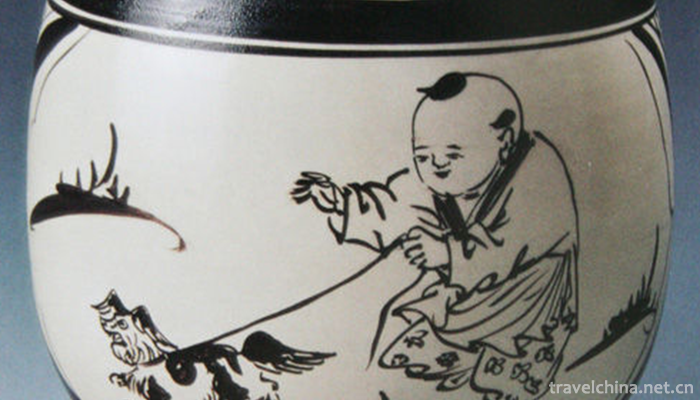
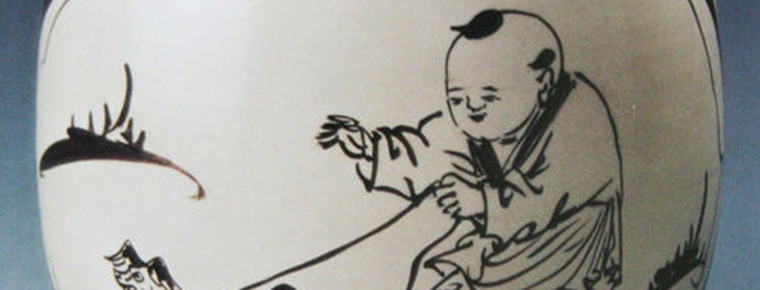
Sintering Techniques of Cizhou Kiln
-
Duck blood soup with vermicelli
Duck blood vermicelli soup is a famous specialty in Nanjing, belonging to Jinling food...
Views: 251 Time 2018-10-26 -
Bali River Scenic Area
Bali River Scenic Spot is a national AAAAA-level tourist attraction with "Global 500 Top" environmental protection. It is located in Yingshang County
Views: 279 Time 2018-12-08 -
Zhujiajiao Ancient Town
Zhujiajiao Town, which belongs to Qingpu District of Shanghai, is located in the West and south of Qingpu District, close to Dianshan Lake Scenic Area. It is bounded by Daying in the East and Huanchen
Views: 211 Time 2019-03-20 -
Chentang Sherpa Singing and Dancing
Chen Tang Sherpa Song and Dance is a traditional folk song and dance in the Sherpa community of Tibet. Accompanied by "Zhanlie" (Six Strings) and "Biwang" (Huqin).
Views: 141 Time 2019-04-16 -
Huaihai Opera
Huaihai Opera, one of the national intangible cultural heritage, is a local traditional drama in Huaian City and Lianyungang City of Jiangsu Province.
Views: 180 Time 2019-05-04 -
Liao Zhais folk songs
The spreading area of Liaozhai slang mainly distributes in Zibo City, Shandong Province. The Pu family and its descendants are the main inheritors. Liaozhai slang is a unique traditional folk music li
Views: 217 Time 2019-05-13 -
Mongolian Boke
Boke is one of Mongolian traditional sports and recreational activities. People on the grassland call Mongolian wrestling "Boke" (strong, united and lasting meaning of Mongolian). It is the
Views: 127 Time 2019-06-03 -
Cork paintings
Cork painting, also known as cork carving, woodcut. Chinese traditional folk sculpture crafts. It is mainly produced in Fuzhou, Fujian Province. It is a handicraft combining carving and painting. Simp
Views: 182 Time 2019-06-11 -
Gufo weir
Located in Huanglongxi section of Jinjiang River in Chengdu, Gufo weir was built in the 25th year of Qianlong reign. Zhangfengzhu, the magistrate of Pengshan County, built a weir to irrigate Huayang, Renshou and Pengshan Sanyi fields.
Views: 177 Time 2020-11-05 -
Tianshi cave
Tianshi cave, also known as Chang Taoist temple, is the most important Taoist temple in Qingcheng Mountain. In 1983, it was designated as the national key Taoist temple by the State Council. In addition, there are four palaces in Qingcheng Mountain: Jianfu palace, Yuanming palace, Yuqing palace and Shangqing palace.
Views: 356 Time 2020-11-08 -
Convenient facilities and medical services of Chengdu Giant Panda Base
Chengdu Research Base of giant panda breeding has a tourist service center in the hall on the first floor of the museum, which can provide free convenience services such as microwave heating, drinking water hot water, baby carriage, wheelchair, walking stick, umbrella, needle and thread bag, etc.
Views: 403 Time 2020-12-13 -
Administrative division of Yibin
Yibin City has 10 county-level administrative divisions (Municipal District 3, county 7), 136 township level administrative divisions (street 14, town 105, township 17). It covers an area of 13271 square kilometers and has a population of 5.52 million. Yibin Municipal
Views: 337 Time 2020-12-18
